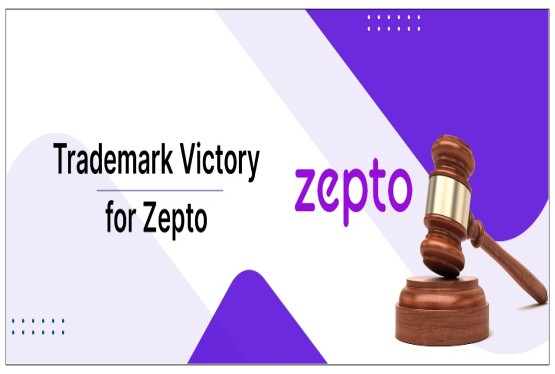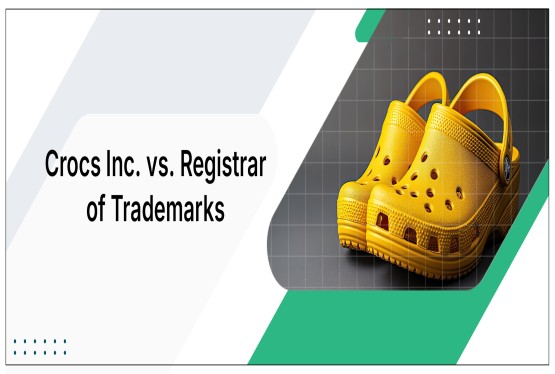"MIS-R" typically stands for "Miscellaneous Reply" in the context of Indian trademark law. When replying to an trademark examination report issued by the trademark registry, a miscellaneous reply is a response submitted by the applicant or their representative addressing any objections or queries raised by the examiner during the examination process.
After a trademark application is filed, it undergoes examination by the trademark registry to ensure compliance with legal requirements and to verify that the mark is distinctive and capable of distinguishing the applicant's goods or services. If the examiner identifies any issues or objections with the application, they will issue an examination report outlining the objections and requesting a response from the applicant within a specified period, typically 30 days.
The applicant or their representative can then submit a miscellaneous reply addressing each trademark objection raised in the examination report. The miscellaneous reply should provide relevant arguments, evidence, and clarifications to overcome the objections and demonstrate the eligibility of the trademark for registration.
Common objections raised in examination reports include issues related to the distinctiveness of the mark, likelihood of confusion with existing trademarks, lack of inherent or acquired distinctiveness, descriptive nature of the mark, and failure to comply with formal requirements of the Trademarks Act, 1999 and Trademark Rules, 2017.
When preparing a miscellaneous reply, it's essential to carefully analyse the objections raised in the examination report and provide well-reasoned arguments and evidence to support the registration of the trademark. Professional assistance from trademark attorneys or agents can be invaluable in crafting an effective miscellaneous reply and the trademark registration process in India.
Filing MIS-R: A Guide for Applicants
The process of replying to examination reports with the utmost efficacy is crucial for securing trademark registration. Maximising the potential of a Miscellaneous Reply (MIS-R) is essential, as it serves as the primary means for applicants to address objections raised by trademark examiners.
Thorough Understanding of Objections: Begin by carefully analysing the examination report issued by the trademark registry. Identify each objection raised by the examiner, including issues related to distinctiveness, likelihood of confusion, descriptive nature of the mark, and formal requirements compliance.
Gather Supporting Evidence: Collect relevant evidence to support your arguments and overcome objections. This may include market surveys, consumer testimonials, sales data, advertising materials, and any other documentation demonstrating the distinctiveness and uniqueness of your trademark.
Craft Persuasive Arguments: Develop clear and persuasive arguments to address each objection raised in the examination report. Provide detailed explanations and legal reasoning to demonstrate why the objections are unfounded or how the issues raised have been adequately addressed.
Highlight Distinctiveness: Emphasise the distinctive elements of your trademark and how they set your mark apart from others in the marketplace. Showcase any unique features, design elements, or slogans that contribute to the distinctiveness of your mark.
Address Formal Requirements: Ensure compliance with all formal requirements of the Trademarks Act, 1999, and Trademark Rules, 2017. Double-check the accuracy of all information provided and adhere to formatting and procedural guidelines outlined by the trademark registry.
Seek Professional Assistance: Consider enlisting the help of experienced trademark attorneys or agents to assist you in preparing and filing the MIS-R. Their expertise can significantly enhance the quality and effectiveness of your reply, increasing the likelihood of a favourable outcome.
Timely Submission: Submit the MIS-R within the specified timeframe outlined in the examination report. Adhering to deadlines is crucial to avoid delays in the trademark registration process and maintain the momentum of your application.
By following these steps and maximising the potential of your Miscellaneous Reply, you can effectively address objections raised by trademark examiners and increase the chances of securing trademark registration for your mark in India.
Maximum MIS-R that can be filed in India
The maximum number of times a Miscellaneous Reply (MIS-R) can be filed with the trademark registry is typically limited to two submissions. This restriction is in place to ensure the efficiency of the trademark examination process and to prevent abuse of the MIS-R mechanism. However, in certain circumstances where additional clarification or information is necessary to address objections raised by the examiner, applicants may have the option to seek permission from the trademark registry to submit a third MIS-R.
If an applicant has already submitted two MIS-Rs and requires further opportunity to respond to objections, they can request permission from the trademark registry to submit an additional MIS-R via email. In this request, it's essential to provide compelling reasons and justification for the need for an additional submission, along with any new evidence or arguments that were not previously addressed in the earlier MIS-Rs.
The decision to grant permission for an additional MIS-R submission is at the discretion of the trademark registry, and applicants should be prepared to demonstrate genuine necessity and diligence in addressing the objections raised. Seeking professional guidance from trademark attorneys or agents can be beneficial in this process for maximising the chances of obtaining permission for an additional MIS-R submission.
The Role of MIS-R in Trademark Law Enforcement
Miscellaneous Reply (MIS-R) plays a crucial role in trademark law enforcement by facilitating communication between trademark applicants and the trademark registry during the examination process. Here's how MIS-R contributes to trademark law enforcement:
Addressing Objections: When the trademark registry raises objections or issues regarding a trademark application through an examination report, MIS-R allows applicants to respond and address these objections effectively. By providing clarifications, evidence, and arguments in the MIS-R, applicants can demonstrate the eligibility of their trademarks for registration and overcome any potential obstacles to registration.
Ensuring Compliance: MIS-R enables applicants to ensure compliance with the legal requirements and formalities of trademark registration. By responding to objections raised by the trademark registry in a timely and comprehensive manner, applicants can demonstrate their commitment to complying with trademark laws and regulations, thereby strengthening their case for registration.
Resolving Disputes: In cases where there are disagreements or disputes between the trademark examiner and the applicant regarding the registrability of a trademark, MIS-R serves as a platform for resolving these issues amicably. Through constructive dialogue and exchange of information in the MIS-R, parties can work towards finding mutually acceptable solutions and reaching a resolution.
Enhancing Legal Certainty: By addressing objections and providing necessary clarifications in the MIS-R, applicants contribute to enhancing legal certainty in trademark registration processes. Clear and comprehensive responses in the MIS-R help to clarify the scope and distinctiveness of trademarks, reducing ambiguity and potential for disputes in the future.
Facilitating Trademark Registration: Ultimately, the goal of MIS-R is to facilitate the registration of eligible trademarks while ensuring compliance with legal requirements and protecting the integrity of the trademark registry. By actively engaging in the MIS-R process, applicants demonstrate their commitment to upholding trademark laws and regulations, contributing to the overall enforcement of trademark protection and rights.
https://www.compliancecalendar.in/learn
Trademark Examination Reports: Effective Reply Techniques
Trademark Examination Reports: Effective Reply Techniques
Thorough Analysis: Begin by carefully analysing the examination report issued by the trademark registry. Identify each objection raised by the examiner and understand the reasoning behind it.
Address Each Objection: Respond to each objection raised in the examination report individually. Provide clear and concise explanations, supported by relevant evidence, to overcome each objection.
Provide Legal Basis: Support your arguments with references to relevant laws, regulations, and legal precedents. Clearly articulate how your trademark complies with the legal requirements for registration.
Highlight Distinctiveness: Emphasise the distinctive elements of your trademark and how they distinguish it from others in the marketplace. Showcase any unique features, design elements, or slogans that contribute to the distinctiveness of your mark.
Submit Supporting Evidence: Include supporting evidence such as market surveys, consumer testimonials, sales data, and advertising materials to substantiate the distinctiveness and uniqueness of your trademark.
Address Formal Requirements: Ensure compliance with all formal requirements outlined in the examination report. Double-check the accuracy of all information provided and adhere to formatting and procedural guidelines specified by the trademark registry.
Provide Clear Responses: Clearly address each objection raised by the examiner and avoid ambiguity or confusion in your responses. Use plain language and avoid technical jargon to ensure clarity and understanding.
Professional Assistance: Consider seeking assistance from experienced trademark attorneys or agents to help you prepare and file the reply. Their expertise can significantly enhance the quality and effectiveness of your response, increasing the likelihood of a favourable outcome.
Timely Submission: Submit your reply within the specified timeframe outlined in the examination report. Adhering to deadlines is crucial to avoid delays in the trademark registration process and maintain the momentum of your trademark application.
Follow-Up: Stay proactive and engaged throughout the reply process. Follow up with the trademark registry as needed, and be prepared to provide additional information or clarification if requested by the examiner.
By following these effective reply techniques, you can address objections raised in trademark examination reports and increase the chances of securing trademark registration for your mark in India.
HOW CAN COMPLIANCE CALENDAR HELP?
We at Compliance Calendar ensure that we not only register your trademark successfully but also protect it in the long run. Our team of experienced and professional trademark attorneys help businesses and individuals to have an easy and smooth trademark registration process without any hassle. We are a one stop solution for all your trademark needs. Are you also looking to get your trademark registered or stuck in any trademark procedure? We are here to help you anytime! For any further clarifications and suggestions, kindly connect on 9988424211 or mail at info@ccoffice.in.






























_(b)_of_the_Trademark_Act,_1999_(1)_crop10_thumb.jpg)



_crop10_thumb.jpg)




























_crop10_thumb.jpg)
_crop10_thumb.jpg)






_crop10_thumb.jpg)








_crop10_thumb.jpg)
_crop10_thumb.jpg)



_crop10_thumb.jpg)




























_crop10_thumb.jpg)

















_crop10_thumb.jpg)






_crop10_thumb.jpg)












































































































































_crop10_thumb.jpg)




































_crop10_thumb.jpg)












_crop10_thumb.jpg)






















